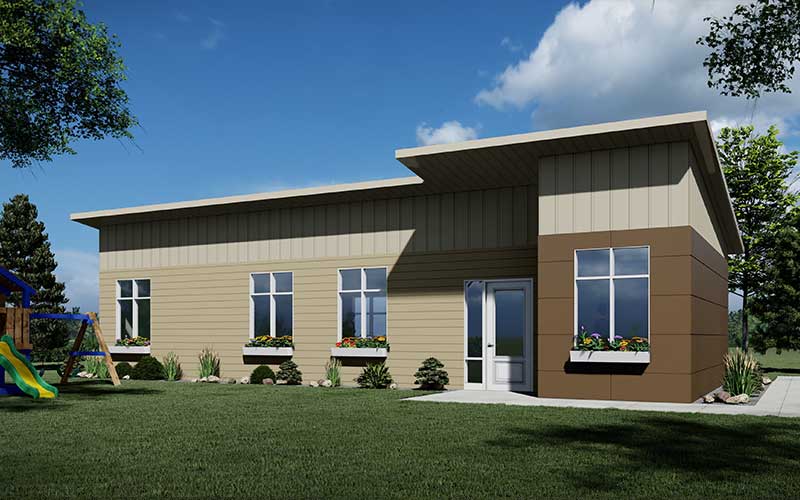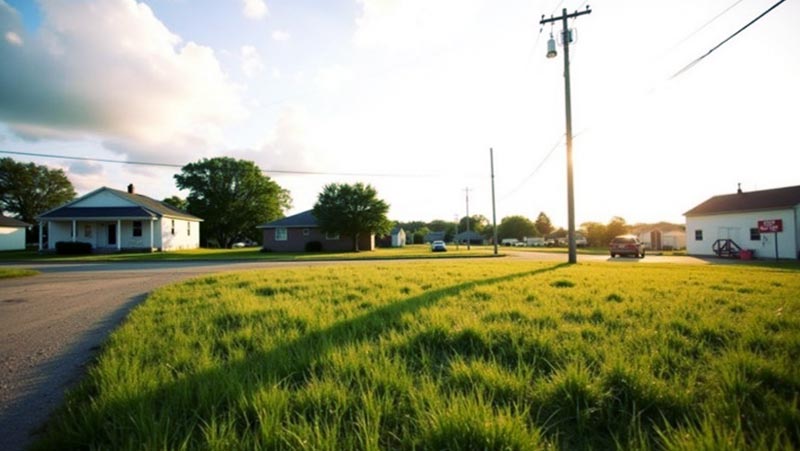Across the country, communities are realizing something many families have known for years: child care isn’t just a family concern, it’s economic development infrastructure.
At Business of Child Care, that realization has shaped everything we do. It’s taken us on a four-year journey alongside civic leaders, employers, providers, and parents in rural communities who are tired of running in circles and ready to build real solutions. Today, we’re meeting those communities where they are, whether they’re still trying to understand the problem or already racing toward implementation. And we’re bringing tailored strategies that unlock momentum, mobilize resources, and move the needle on child care access, quality, and sustainability.
The Problem Behind the Headlines
Every day, we hear the same questions from local leaders: Why is our workforce stuck? Why are families leaving? Why is business growth slowing? And in many cases, the answer is simple but overlooked, there’s nowhere for children to go during the day. Across much of rural America, we see “child care deserts” that limit economic mobility, undercut employer stability, and create long-term drag on regional growth.
We help communities look at the data through a new lens. This isn’t just about families, it’s about wage realization, economic productivity, and community-level outcomes. One provider enabling just 10 parents to return to work can unlock $400,000 in local wages each year. Over time, the return on investment from right-sized child care infrastructure is not only measurable, it’s transformational.
From Frustration to Focus: The Three Stages of Readiness
Over time, we’ve come to recognize that most communities fall into one of three stages of readiness:
- Stage One: Understanding the Impact
Communities in this stage are still trying to grasp the true cost of the child care gap. Through our economic impact assessments, we help quantify the missed wages, workforce participation, and long-term economic consequences. For many, this is the moment of realization: we can’t grow if parents can’t work. - Stage Two: Building the Plan
Once the need is clear, the next step is crafting a local roadmap. Our Child Care Solutions Activation Plan helps communities define three to five actionable priorities, calculate their investment needs, and build shared ownership across schools, employers, and local government. This isn’t a binder on a shelf, it’s a launchpad built with the people who will make it happen. - Stage Three: Activating the Solution
When a community knows what to do but needs help getting started, we offer targeted services that bridge the gap between intent and implementation. Whether it’s supporting a struggling center through our Stability & Growth program or helping launch new provider-led businesses through Click Start, our job is to make sure the plan doesn’t stall out at the starting line.

Real Tools for Real Progress
We’ve developed a range of tools to meet communities at any point along this readiness path:
- Economic Impact Consultations
Community-specific data and wage-loss modeling show how much is at stake and how much can be gained. - Community Roundtables
For regions seeking clarity, our 90-minute virtual roundtables bring the right stakeholders to the table and get everyone moving in the same direction. - Child Care Solutions Activation Plans
Our signature 3–4 month process helps communities generate a focused, fundable, and implementable plan, complete with cost modeling and the defined steps to activate. - Child Care Center Stability & Growth
Designed for existing programs in crisis, this initiative helps boards and operators realign business models, reestablish sustainability, and restore confidence. - Child Care Plan Kickstart Program
A step-by-step support system for local task forces or working groups ready to implement but needing structure, organization, and confidence to take the next step. Whether communities have just completed an activation plan or developed their own roadmap, Kickstart helps bridge the gap between planning and real-world progress. - Hosted Spaces
Many providers are ready to step in, but don’t have access to appropriate space. Hosted spaces repurpose safe, non-residential environments for use as family child care sites. Whether it’s a vacant community room, employer-donated space, or underutilized housing asset, hosted care creates new supply without new construction.
Child Care House: Bringing Child Care Closer to Home

Launched in late 2024, Child Care House is our newest offering and one of the most powerful tools for rural communities trying to create sustainable care in places where traditional centers don’t fit.
Child Care House is a residential-scale, standalone child care environment, purpose-built for licensed family or small group child care. It comes fully outfitted, complete with learning materials, child-sized furnishings, and outdoor play infrastructure. The model pairs a turnkey physical space with first-year startup and operational support for the provider, and a funding roadmap for the community.
But the real power of Child Care House isn’t just in the structure. It’s in the intent: to bring child care closer to where people already live, work, and want to stay. For small towns with infill lots or unused parcels, it’s a practical, repeatable way to create access without displacing homeowners or overloading city-owned facilities.
Our first unit is under development in Mapleton, Minnesota, expected to open in summer 2025. More are in early-phase exploration, each with a custom business case and local partnership strategy designed to keep families rooted in the places they call home.
Framing Child Care as Economic Infrastructure
One of the biggest shifts we’ve seen is the change in language: mayors, employers, and development authorities are no longer talking about child care as a soft service, they’re recognizing it as infrastructure.
We ask every community to consider:
- Would you build a new neighborhood without water and sewer?
- Would you recruit an employer without planning for broadband?
- So why plan for population growth without planning for child care?
Framing child care as infrastructure doesn’t just elevate the conversation, it changes who’s at the table, how funding is pursued, and how urgency is understood.

Communities Are Moving—And We’re Moving with Them
In Moultrie County, Illinois, real change took root in less than 24 months. The Sullivan Chamber & Economic Development team, together with the Moultrie County Board, recognized that limited child care access was holding the area back, and took bold, coordinated action.
Through our Child Care Solutions Activation Plan, we helped them turn that commitment into measurable progress:
-
100% retention of all existing licensed providers and child care slots
-
78% increase in local licensed capacity, with 100 new slots expected by Fall 2025
-
300% increase in Family Child Care QRIS participation across the county
The result is a locally led strategy that combines immediate stability with long-term growth, anchored by shared investment, structured planning, and a clear commitment to the families and providers who hold the system together.
And Moultrie is part of something bigger. Across the country, communities are taking child care seriously and treating it like the economic infrastructure it is.
In states like North Carolina, Illinois, South Dakota, Minnesota, Wisconsin, and Missouri, we’re seeing a growing wave of innovation and resolve:
- Civic leaders are integrating child care into land-use, housing, and long-range development planning.
- Chambers of commerce are anchoring apprenticeship pipelines and workforce solutions to support growth in the field.
- Rural counties are allocating public funds and property for future-ready child care infrastructure.
- Local teams are converting underused community buildings into hosted, licensed environments for family child care.
- Economic development partnerships are positioning child care as central to business attraction, retention, and overall community viability.
Each of these efforts reflects a common thread: this work doesn’t begin with a template—it begins with the decision to move. And the strongest results come when communities are supported, resourced, and empowered to build something that fits.
We don’t offer a universal model. We offer the structure, clarity, and staying power to help communities define their path—and take the steps to walk it.
Where We’re Headed Next
Our journey continues, and our purpose remains clear: help communities and the providers who serve them move from idea to action. If you’re a local leader wrestling with how to move forward, the good news is, you don’t have to figure it out alone.
Whether you’re in the earliest stages of discovery or already have a draft plan in hand, we can meet you where you are. Our role is to help communities find clarity, build confidence, and activate meaningful solutions.
Child care isn’t optional. It’s foundational.
And when we invest in it wisely, it pays us back, in wages, in resilience, and in the families who get to stay and thrive in the places they call home.
If you’d like to explore how Business of Child Care can help your community take the next step, visit www.businessofchildcare.com or message me directly, or keep the conversation going by connecting on LinkedIn.
Let’s build something that works—together.

